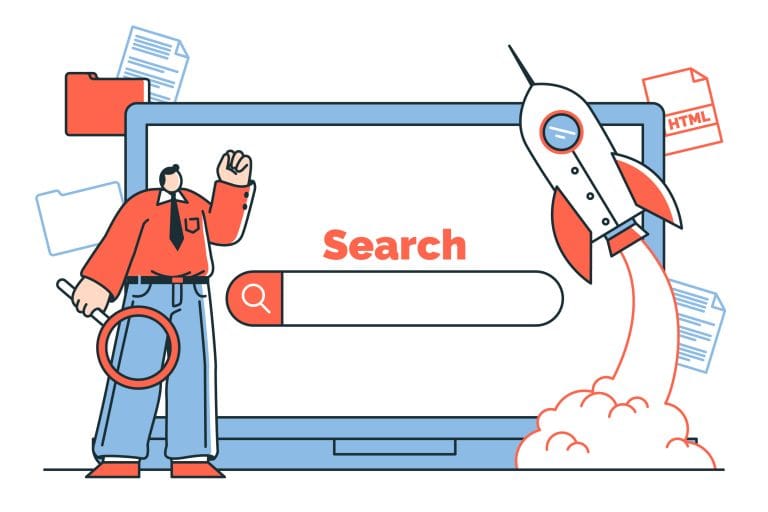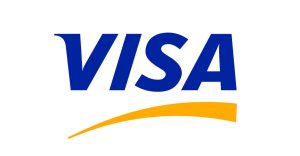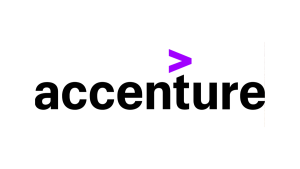Introduction
Definition of Search Engine Optimization
Search Engine Optimization, better known as SEO, is simply looking over the key elements within a website to rank on the upper results on the search engine page. Well-done SEO works like magic, drawing traffic in and increasing online visibility, which results in business success. In this paper, we highlight basic SEO strategies that will bring in more site traffic and hence business success.
Keyword Research
Why do keyword research?
The tag analysis is the most critical part of a good SEO campaign. That means, therefore, knowing the terms likely to be applied by the potential audience in search products or services that fall in line with their businesses.
In fact, it is easy to attract the proper kind of traffic if what they will want is known ahead of time. Once keyword research concludes before any content can be created in order to meet needs and attract the target visitors to the site,
Tools to conduct effective keyword research
It is from such tools as
- Google Keyword Planner
- SEMrush, Ahrefs
- Moz Keyword Explorer
that one may identify the best-performing keywords. You will be in a position to know the volume, the level of competition, and the keyword trends in the search.
Examples of long-tail keywords vs. short-tail keywords:
Broadly speaking, the long-tail keywords are more accurate in nature and hence less competitive and easy to rank; on the other hand, the short-tail keywords ones are really general in nature and might turn out to be very competitive, though they bring enormous traffic if ranked well.
You are supposed to be aware of whether these keywords are in the nature of being informational, navigational, transactional, or a mix of these with commercial intent.
Keyword intent and user behavior
Getting an idea from a tool like Google Analytics about the behavior of people says volumes in letting you know about their interaction with the rest of the content on the site.
Competitor Keyword Analysis
Research the keywords your competitors are ranking for, consider the obtained data, and it will bring out the gaps in your keyword strategy and also give you useful ideas. Tools you can use include SEMrush or Ahrefs. They allow you to see the keywords and backlinks for your competitors.
On-Page SEO
- Title tags and meta descriptions
- Optimizing for featured snippets
Optimization on the page to develop a complete guide for optimizing individual content of a web page for a higher search ranking of the traffic needed Title tags and meta descriptions:
On-page optimization is mainly involved with the title tags and the meta description, which must include targeted keywords and, above all, should call for action that will make the visitor want to click through. Title tags and meta descriptions must be unique per page.
Header Tags (H1, H2, H3)
Proper header tags Proper header tags are H1, H2, and H3 structured; all these make your content more readable and far easier to rank for.
H1 will be used for major content keywords; H2 and H3 add content to topics and secondary keywords.
Simple, relevant URLs improve the user experience and search rankings. This can be accomplished first place by the use of hyphens in players, avoiding or minimizing the use of unwanted and stop words, and including target keywords whenever possible and useful.
Describe images via alt tags; compress image files to enhance load time. It can also help in SEO through descriptive filenames and captions of images.
Internal linking, links to other important pages on your site, so crawlers can understand how a site is structured and authority is passed. Make sure the anchor texts are descriptive and then have a logical linking structure.
Structured data just helps a search engine, such as Google, learn more about what your content is: It helps to make your search listings enriched with more details, in the form of rich snippets. There are several tools that can help with the implementation of this, including the structured data markup tool.
It may position at the very top in SERPs—that is why it can drive super amounts of traffic. Thus, in preparing your content, be plain and direct to the point with your answer to common questions. This way, it’s very likely to be featured.
In theory, content is created first and then optimized, which is pretty much what SEO is.
The quality of content
The information should carry utility, relevance, and informativeness for the audience. Make the content drive towards solving problems, answering queries, or counseling.
Benefits of Unique and Relevant Content
The content would uniquely be written without offsetting any duplication and would also be relevant to the audience. The reason is just because the unique content is noticeable and people will share and link to it very much.
Natural usage of keywords in content
Incorporate keywords naturally and avoid keyword stuffing. Use synonyms and related keywords in content to enhance relevance better.
Length and Readability of Content
Google prefers content that is longer, but what cannot be lacking is a base level of readability. Break up your article with some shorter paragraphs, some bullet points, and your list with some headings. It’s a heck of a lot easier for your reader to scan your content this way.
Content refresh and update strategies
Content performance improves when it is upgraded and updated.
Identify old or outdated content and re-establish it with new data, and add some new keywords and insights.
- User engagement signals
In fact, so many user engagement signals are driven by content quality and relevance—for example, how to lower your bounce rate, such time on page, and social shares. Fill your open loops to urge more comments, shares, and opens.
- Using multimedia content
Continually add pictures, videos, infographics, and other multimedia content that enhances the user experience and encourages more sharing, to name a few.
Technical SEO
Technical SEO makes your website meet the technical standards of modern-day search engines.
Website speed and performance
The speedier the website is, the better the user experience. And some sties that need higher in the search.
Use the tools to identify and resolve the performance issues:
Mobile-friendliness Secure websites HTTPS
Mobile-first indexing will make sure your website is responsive. Therefore, be sure to make your site responsive to perform better on devices.
Secure Websites—HTTPS
Make sure the web administrators use HTTPs as the signal to provide the basis for starting with an SSL certificate to be secure on your end.
The sitemap makes it easier for search engines to understand your website structure and helps index your content very easily. You can generate and submit this sitemap with the help of, say, Yahoo SEO.
Robots.txt lets search engines know what kind of pages are to be crawled and which aren’t. You don’t want to end up blocking the all-important pages based on some errors in your robots.txt file, so you need to be careful with that.
Canonical tags and duplicate content
Canonical tags help eliminate duplication of page content. They are the directive to the search engine and represent the most desirable version of the web page. Furthermore, it uses to cut down on excessively matching URLs.
Crack Budget Optimization
Every search engine allocates a certain crawl budget to each site. It’s the number of pages the search engine is going to crawl within a site. Make the best use of this crawl budget by eliminating deadwood pages and structuring it properly.
Off-Page SEO
Any action taken outside your website that helps to rank it.
Why links are important Strategies for quality link building
Ways to get a good quality backlink from the sites: If one can get a good quality backlink from an authority site, then his/her site will be boosted to have authority and thus, by default, a ranking. Good quality techniques for link building
Great-quality blogs written and posted on great-quality sites that belong to your niche.
Influencer Outreach:
Partner with the influencers so that you get yourself a backlink and, in turn, a social share.
Local SEO
- Why local SEO is important for businesses
- Optimizing Google My Business Local Citations
- Reviews Geo-targeted keywords
- Local link-building strategies
- Creating local content
- Local search mobile optimization
Local SEO: It is very important if the target audience is local.
Why local SEO is important for businesses
It makes your business appear when someone searches for terms local to them, looking for businesses around them. A must-have for physical businesses and businesses whose target market is a geographical area.
Optimizing Google My Business Local Citations
Create Google My Business and Optimize: business name, cont address, phone number, hours of operation.
More Consistent NAP and positive reviews help to build up local SEO. Local directories register your business and request customers to share reviews of our business.
Reviews geo-targeted keywords
Geo-targeted keywords help to attract all local altitude. Using title tags, meta descriptions, and content in the use of geo-targeted keywords
Local link-building strategies
Local Link Building through news websites, local blog sites, or local business directories
Host and attend local events; this helps build backlinks through attention
Local Content Development
Research information to be shared that can be created to connect with your local target audience; It could be as simple as re-tweeting-polls or what’s going on with the local Target audience to chat about local events, news, or other local occurrences in the community.
What is new in SEO trends?
Get a step ahead of others.
Youngsters increasingly actively resort to voice search. Your website is sure to become compatible for that, in particular, by using a more natural type of language and a question-based key phrase.
- Artificial Intelligence and Machine Learning in SEO
AI optimizes created content. Integrated use of precise keyword research analytics allows deriving predictions. Machine learning helps drill down to the baseline based on the user intents.
- Video SEO
With this, it has now become imperative to optimize video content titles, tags, descriptions, and transcripts with relevance to get good indexing for the SERPs. And nowhere has video content ever been so important for SERPs or to engage an audience.
- User Experience: Role in SEO
Therefore, all positive navigability and quick page loading in UX result in beautiful and fruitful SEO. Make the UX as easy and pleasurable as possible.
- Semantic Search and Entity-Based SEO
Search engines are becoming semantic with the progression in the process of understanding context and the way they understand the relationship between entities. Your content strategy should be crafted in such a way that it is well optimized for semantic search by using related terms and concepts.
- Personalized Search Results
Gradually, there’s more and more happening within search results, and knowing your audience will leave you able to produce for the specific needs and wants of that audience.
- How to Future Proof Your SEO Strategy
Keeping up with new trends and algorithm changes is vital. Strategies need to be tested continuously and their reviews kept evergreen, as the SEO landscape is constantly subject to change.
Conclusion
With such best search engine optimization practices, it is certain that web traffic of yours would be increased and definitely a success. Remember, there is always a learning process. With every step along the way when you upgrade yourself against the current trends and further fine-tune the strategies against data, you would be capable enough to not only maintain but improve the rankings.




